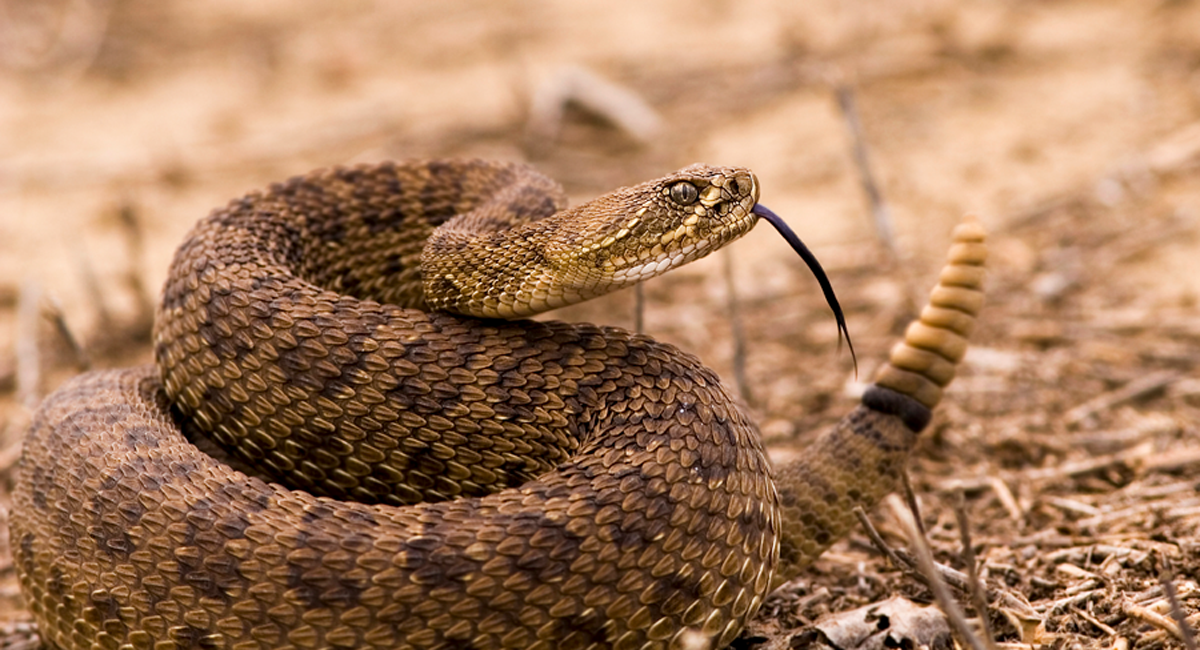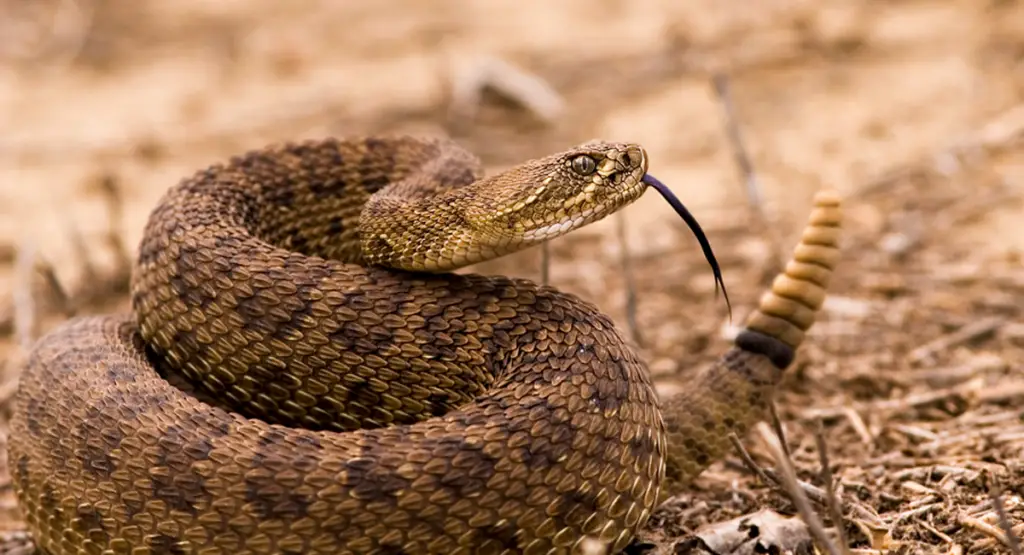Introduction:
A rattlesnake bite can be a scary and dangerous experience, and it’s important to know what to do if you or someone you know gets bitten. With their venomous fangs and quick strike, rattlesnakes are one of the most dangerous snakes in North America.
If you find yourself or someone else bitten by a rattlesnake, the first thing to do is stay calm and seek immediate medical attention. In this article, we’ll discuss what steps to take if you or someone you know is bitten by a rattlesnake, as well as how to minimize the risk of getting bitten in the first place.
If you are bitten by a rattlesnake, seek medical attention immediately. While waiting for medical help, keep the affected area immobilized and lower than your heart. Do not try to suck out the venom or use a tourniquet. Avoid any strenuous activity and stay calm to slow down the spread of venom in your body.

What to Do if Bit by Rattlesnake?
Rattlesnakes are venomous snakes that can be found in many parts of the world. If someone gets bitten by a rattlesnake, it can be a life-threatening situation. Here are some steps that can be taken to reduce the risk of serious complications.
Seek Medical Attention Immediately
The first thing to do if bitten by a rattlesnake is to seek medical attention immediately. Call 911 or go to the nearest emergency room. Do not wait for symptoms to appear, as the venom can spread quickly through the body.
The medical team will monitor the patient’s vital signs and administer antivenom as soon as possible. Antivenom is the only treatment for rattlesnake bites and should be given as soon as possible to prevent serious complications.
Stay Calm and Immobilize the Bite Area
While waiting for medical help, it is essential to stay calm and immobilize the bite area. This can slow down the spread of venom to other parts of the body. The bitten limb should be kept at or below heart level to reduce swelling.
Avoid moving the affected limb, as this can cause the venom to spread more quickly. Do not apply a tourniquet or try to suck out the venom, as this can make the situation worse.
Remove Clothing and Jewelry from the Bite Area
If possible, remove any clothing or jewelry from the bite area. This can help prevent constriction as the area swells. However, if the clothing or jewelry is stuck, do not force it off.
It is also essential to keep the bite area clean and dry. Do not apply ice or water to the wound, as this can cause tissue damage.
Monitor Vital Signs and Symptoms
If medical help is delayed, it is essential to monitor vital signs and symptoms. Keep an eye on the patient’s breathing, pulse, and blood pressure. If the patient shows signs of shock, such as pale skin, rapid heartbeat, or shallow breathing, call 911 immediately.
Other symptoms of a rattlesnake bite may include pain, swelling, redness, and discoloration around the bite area. The patient may also experience nausea, vomiting, and dizziness.
Prevent Rattlesnake Bites
The best way to prevent rattlesnake bites is to avoid contact with the snakes. Rattlesnakes are most active in the warmer months, so be extra cautious when hiking or camping during this time.
Wear long pants and boots when hiking in areas with rattlesnakes. Avoid walking near tall grass or rocky areas, where snakes may be hiding.
If you encounter a rattlesnake, give it plenty of space and do not try to handle it. If you have a pet with you, keep them on a leash and away from the snake.
Benefits of Antivenom Treatment
Antivenom treatment is the only effective treatment for rattlesnake bites. It can reduce the severity of symptoms and prevent serious complications, such as organ failure or tissue damage.
Antivenom works by neutralizing the venom in the body, so it is important to receive treatment as soon as possible after a bite.
VS. Other Treatments
There are no other treatments for rattlesnake bites besides antivenom. Some people may try home remedies or alternative treatments, but these are not effective and can be dangerous.
Using a tourniquet or sucking out the venom can actually make the situation worse. It is essential to seek medical help immediately and receive antivenom treatment.
Conclusion
Rattlesnake bites can be life-threatening, but prompt medical attention and antivenom treatment can save lives. If someone is bitten by a rattlesnake, the first step is to seek medical help immediately. Stay calm, immobilize the bite area, and monitor vital signs and symptoms.
The best way to prevent rattlesnake bites is to avoid contact with the snakes and take extra precautions when hiking or camping in areas where rattlesnakes are known to live. Remember, antivenom treatment is the only effective treatment for rattlesnake bites, and home remedies or alternative treatments should not be used.
Frequently Asked Questions
What are the symptoms of a rattlesnake bite?
Rattlesnake bites can cause a variety of symptoms, including immediate pain and swelling around the bite area, nausea, vomiting, sweating, and muscle weakness. In severe cases, a person may experience difficulty breathing, seizures, and even death. It is important to seek immediate medical attention if you have been bitten by a rattlesnake.
What should I do if I am bitten by a rattlesnake?
If you are bitten by a rattlesnake, it is important to stay calm and seek medical attention immediately. Do not attempt to suck out the venom or apply a tourniquet to the affected area. Keep the affected limb immobilized and at or below heart level to slow the spread of the venom. Avoid any unnecessary physical activity that could cause the venom to spread more quickly.
How is a rattlesnake bite treated?
Treatment for a rattlesnake bite typically involves antivenom medication, which works to counteract the effects of the venom. The affected limb may also be immobilized and elevated to reduce swelling. Pain medication and anti-inflammatory drugs may also be prescribed to manage symptoms. In severe cases, hospitalization may be necessary.
Can I prevent a rattlesnake bite?
While it is not always possible to prevent a rattlesnake bite, there are steps you can take to reduce your risk. Wearing long pants and boots when hiking or working outdoors can help protect you from bites. Avoiding tall grass and brushy areas where rattlesnakes may be hiding can also reduce your risk. It is important to be aware of your surroundings and watch for signs of rattlesnakes, such as the sound of their rattle or their distinctive markings.
What should I do if I encounter a rattlesnake?
If you encounter a rattlesnake, it is important to give it a wide berth and avoid startling it. Do not attempt to handle or capture the snake, as this can increase your risk of being bitten. If you are in an area where rattlesnakes are common, it is a good idea to carry a snakebite kit or know the location of the nearest medical facility in case of an emergency.
What to do if you’re bitten by a rattlesnake
In conclusion, being bitten by a rattlesnake can be a scary and dangerous experience, but there are things you can do to increase your chances of survival. The first thing to do is to stay calm and try to keep the affected limb still. Next, seek medical attention as quickly as possible, as anti-venom treatment is the most effective way to counteract the venom. Finally, take steps to prevent future snake bites, such as wearing protective clothing and being aware of your surroundings when hiking or spending time in snake-prone areas. Remember, prevention is always the best strategy when it comes to dealing with venomous snakes. Stay safe and stay informed!


